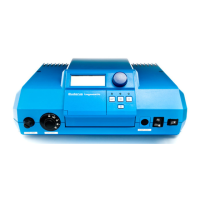What you should know about your heating system
2
Logamatic 2107 controls - We reserve the right to make any changes due to technical modifications. 11
Why do I need a timer?
Modern heating systems are equipped with a timer to
save energy. This allows setting up an automatic
changeover between two different room temperatures,
subject to time, e.g. a reduced room temperature at
night, while operating your heating system with the
standard room temperature during the day.
You have four options for reducing the room
temperature. Your heating contractor will select and set
up one of these options according to your requirements:
– Total shutdown (no room temperature control)
With total shutdown of the heating system, no pumps or
other system components are running. Heating only
recommences if there is a risk of the heating system
freezing up.
– Reduced room temperature (a reduced room
temperature will be maintained)
Heating with reduced room temperature (night mode)
differs from the standard heating mode (day mode) only
in that it has a lower required room temperature at times
at which less heating is required, e.g. at night.
– Change between total shutdown and reduced
heating subject to room temperature
When changing from total shutdown to reduced heating,
the total shutdown will be activated subject to the room
temperature when the actual room temperature exceeds
the set room temperature. This function is only possible
with a room temperature sensor installed.
– Change between total shutdown and reduced
heating subject to outdoor temperature
When changing from total shutdown to reduced heating,
the total shutdown will be activated subject to the
outdoor temperature when the actual outdoor
temperature exceeds the set outdoor temperature.
What are heating zones?
A heating describes the loop taken by the heating water
from the boiler via the radiators and back to the boiler
(Fig. 1 on page 8). A simple heating zone comprises a
heat generator, a supply pipe, a radiator and a return
pipe. A pump installed into the supply pipe circulates the
heating water. Provided that the pipes are well insulated,
all the radiators will be supplied with the same supply
temperature.
Several heating zone may be connected to one boiler,
for example, one heating zone for supplying radiators
and a second heating zone to supply an underfloor
radiant heating system. In this case, the radiators are
supplied at a higher supply temperature than the radiant
heating system.
Different supply temperatures in a heating system can
only be achieved if a three-way valve is installed
between the boiler and the underfloor radiant heating
system, for example.
Using an additional temperature sensor in the supply
of the heating zone, cold return water is added to the
hot supply water via the three-way valve to achieve
the required lower temperature. It is important to note
that heating zones with three-way valves require an
additional pump. This pump enables the second
heating zone to be operated independently of the
first heating zone.

